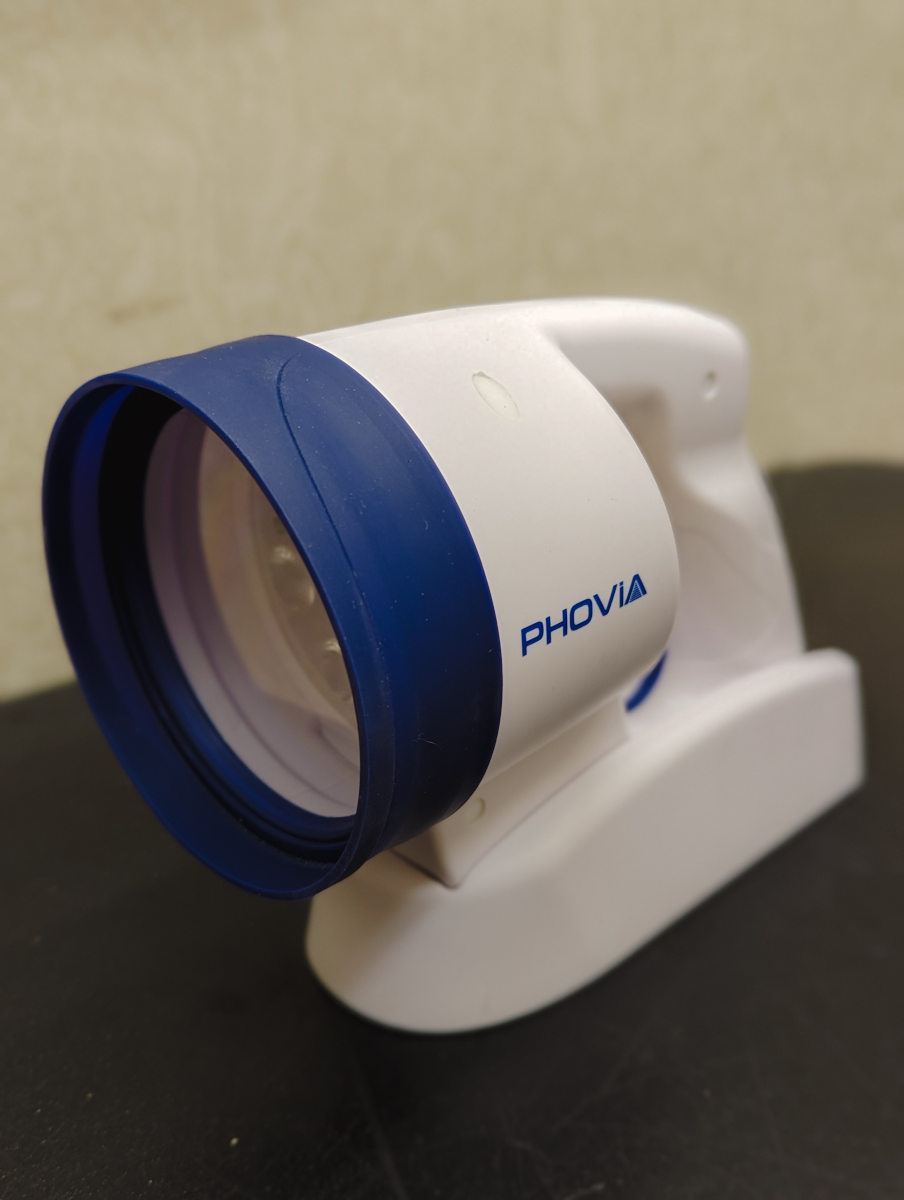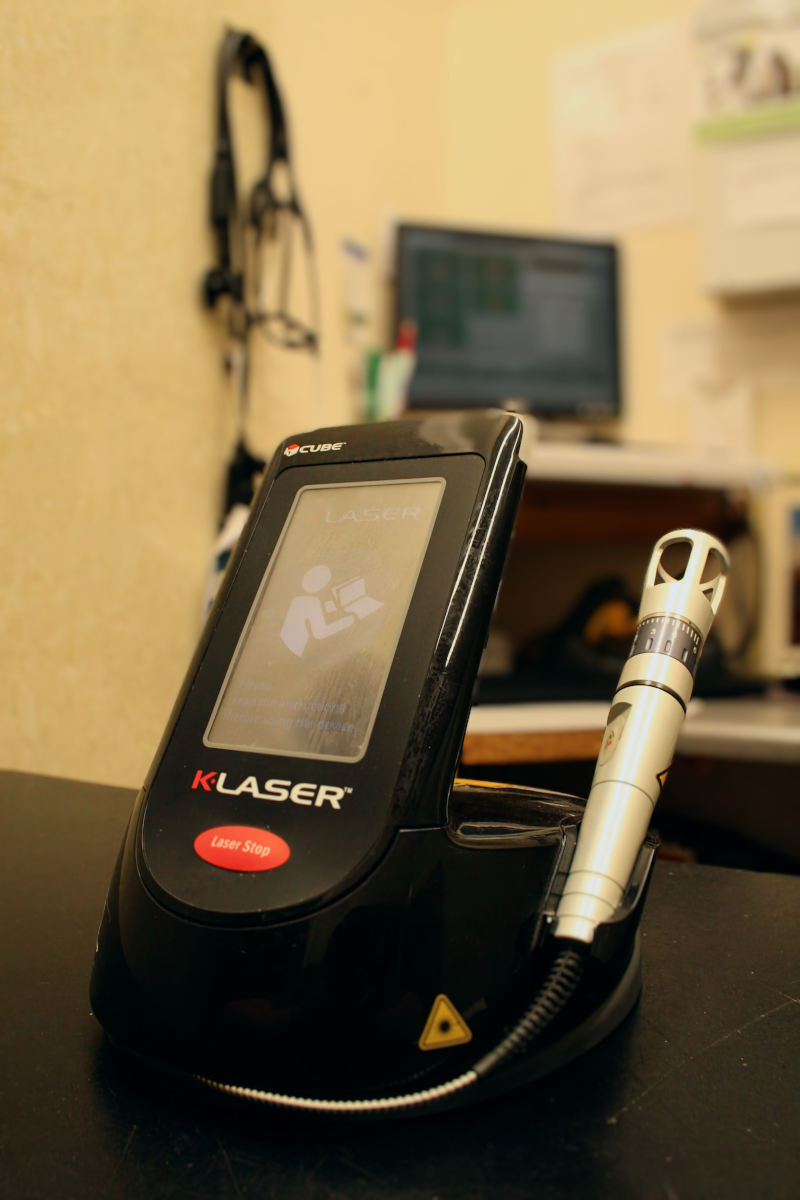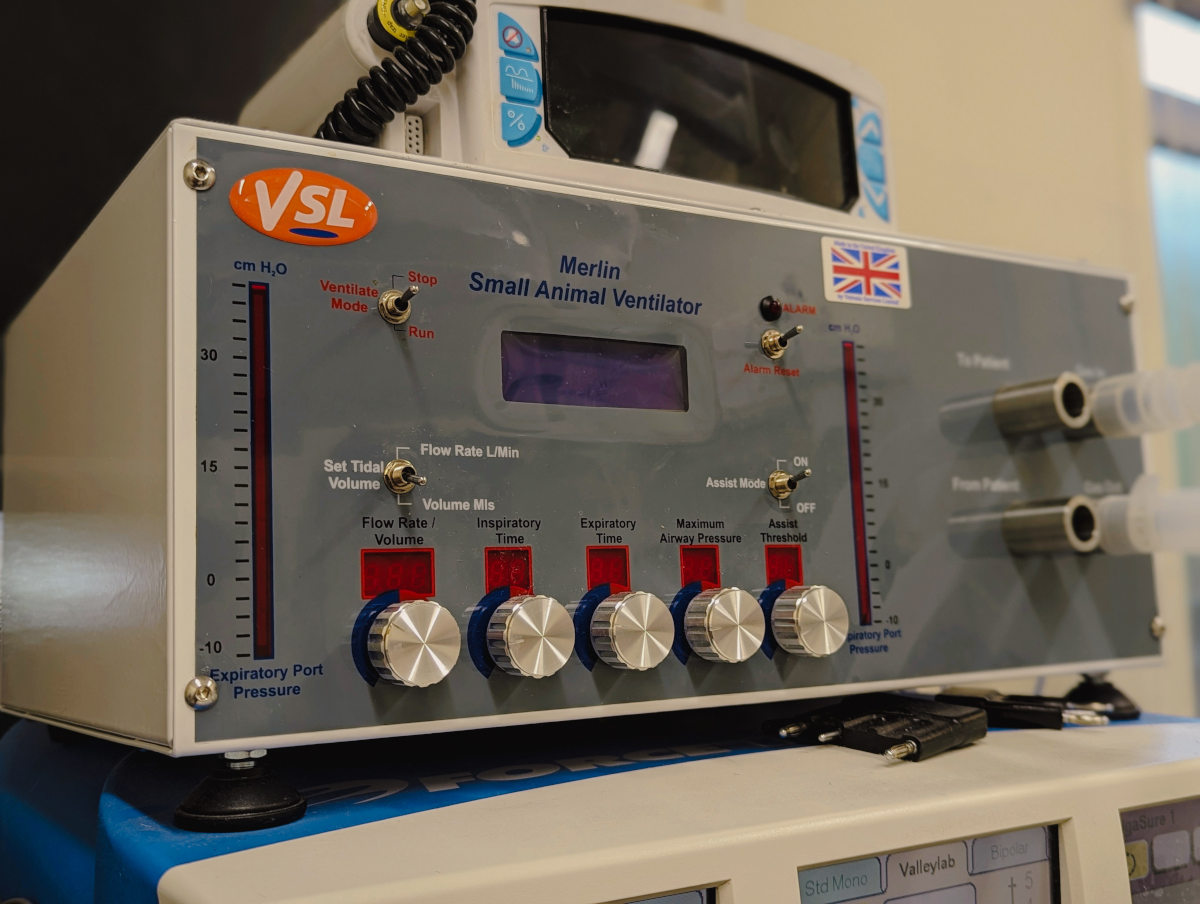Diagnostic Equipment
S.T.Stead is fully equipped with a high standard of equipment and technology throughtout the practice, including the following.
 Ultrasound
Ultrasound
At the practice we have 3 ultrasound scanners, each for a different purpose. To examin such as, eyes, abdomens, tendons and limbs. Unlike an X-Ray machine, Ultrasound excels in highlighting the subtle differences in soft tissue and major organs, including the heart, liver and Kidneys.
We can also use Ultrasound to check for pregnancy as well as more detailed scans to help detect a problem within that area.
The advantage of using an ultrasound, is because it can frequently eliminate the need for major surgery and enables us to diagnose conditions more quickly and with less pain and discomfort for your pet.
 Digital Radiography (X-Rays)
Digital Radiography (X-Rays)
Digital radiographs are used to help identify problems within bones and joints. They can also be used to assess the heart and lungs and the gastro-intestinal and urinary systems. Usually animals will need to be sedated when using radiography as they will need to be very still.
Dental Radiography (X-Rays)
Dental Radiographs can show the disease status of the tooth, allowing the vet to make a much more informed decision about what treatment is required. It can be used for cats, dogs and rabbits to show the full length of the tooth’s root as well as the surrounding jaw.
 Pulsevet Shockwave Therapy Machine
Pulsevet Shockwave Therapy Machine
Shockwave therapy can be used as an alternative to surgery or increasing anti-inflammatory drugs. It is used to help treat arthritis, joint injuries as well as broken bones and non healing wounds.
In many cases dogs and cats can suffer from chronic pain and lameness. In the past we may have tried hydrotherapy, acupuncture, physiotherapy or alternative therapies, but we now have a more natural remedy using shock waves or high energy sound waves that travel deep into the body (unlike laser or physiotherapy) and stimulate the bodies own repair system which can be helpful in none responding cases of lameness or chronic inflammation.
We give three treatments at two-week intervals under a sedative.
Endoscopy
Endoscopy is performed under General Anaesthesia and consists of inserting a small, flexible camera into the animals mouth. This can be used to examine the inside of the airways, the gastro-intestinal and the urinary systems, it can also be used to collect samples and also to retrieve foreign material.
Anaesthetic monitoring equipment
All pets are carefully monitored throughout surgery, all of our nurses and vets are trained to use the most modern anaesthetic agents.
We use blood pressure measurement, capnography, pulse oximetry and electrocardiography to monitor our patients.
 Incubator & Critcal care facilities
Incubator & Critcal care facilities
An incubator is an insulated enclosure, in which the temperature, humidity and other environmental conditions can be regulated, we will use the incubator for newborn pups.
Reptile enclosuer
We do have a reptile enclosure, this is a small enclosure that will monitor the correct environment and temperatures for what your reptile requires. Our vet also has over 30 years experience working with exotics.
Isolation kennel
We have an isolation kennel for both large and small animals, which is located in a separate ward away from our general kennel area, This area is facilitated with separate equipment to be used for each patient, so it can easily be cleaned and disinfected.
 Phovia
Phovia
Phovia is a non- invasive, two- part system which is comprised of an LED lamp and a chromophore gel. They are used together to help produce a multi-wavelength fluroecent light energy that can penetrate into the skin to provide faster healing.
Phovia is a light theraphy that is clinically proven to support skin healing in both dogs and cats.

K-laser
K-Laser is a laser therapy, which can provide pain free and non invasive treatment by either a trained vet or nurse. It can provide healing for acute and chronic wound and musculoskeletal conditions.
We recommend a course of 6 sessions over 3 weeks, this would include 3 sessions the first week, 2 the second week and 1 session in the final third week. The sessions can be repeated in required or requested by the vet.
It is £20.00 per session, although your pet insurance may cover treatment.
K-Laser can help with conditions such as: Osteoarthritis, Hip Dysplasia, Dermatitis, Fractures, Post Surgical Incisions, Westie Lung and much more.

Adaptix
Adaptix is a low cost 3D imaging machine, which enables diagnostic procedures, such as dental imaging at an affordable price. It allows better care for your pet and can acquire a ‘full set’ of 3D dental images in a substantially quicker time than a 2D dental X-ray. Although, 2D imaging is a dominant modality, it provides a limited view of the anatomy.
It can also be used for Orthopedic injuries, as some injuries can be difficult to identify, a 3D image would be better to help identify the issue.
 Ventilator
Ventilator
A ventilator is used to help provide respitatory support for animals who are unable to maintain ventilation or oxygenation on their own.
In our operating theatre we have a small animal ventilator, which is a microprocessor-controlled ventilator. It works with high- definition LED’s to give a precise and reliable reading of all parameters, such as inspiratory and expiratory airway pressure, patient compliance, respiratory rate and inspiratory and expiratory time ect. It has purposed designed stainless steel and silicon valces for precise flow control whilst patient is under anaesthesia.
 ECG
ECG
An ECG is a electrocardiogram, which is a diagnostic test to help calculate a patient’s heart rate and determine the heart rhythm.
Waveforms are produced during an ECG recording, which are specific portions of the heart’s electrical activty, if a heart rhythm is abnormal an analysis of the ECG result can diagnose the exact arrhythmia that is present and suggest likely underlying causes for this arrhythmia.

